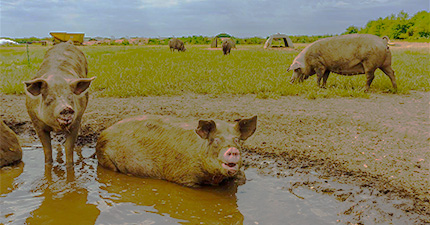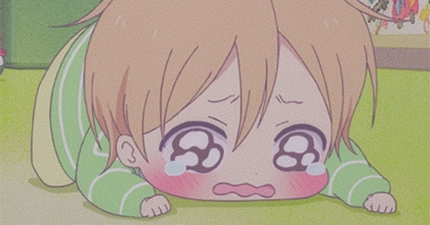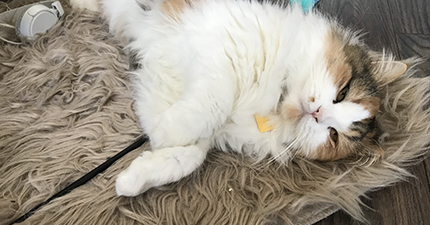There’s a memory that I have that I’m not sure if I should share, mostly because I’m always unsure of the ethics around sharing memories that involve people who are not me. But I’ll share it without naming the person it was with.
I was an art student, horribly insecure about my creativity and intellectualism, when I was messing around with some paint. Just colors on a wood panel that I found somewhere. I didn’t want to have to go through the trouble of making my own canvas and I also didn’t like the prepaid ones. My friend walked by and scoffed, “you don’t think that this kind of painting has already been done before?”
The comment did embarrass me at the time. I think I said something back along the lines of “Do you think that people should only make art that hasn’t been made before?”. The reason I name this moment is not to call out that friend—and we did remain friends for a long time after. They’re a beautiful person who I’ll always love and that moment of shared insecurity doesn’t define us. The reason I name that moment is because I think that, at the moment, we were both captivated by an expectation that art must always be completely original. This is an expectation that is incredibly chauvinistic.
The idea that your ideas are completely your own? Uninfluenced by anything around you? That you can wield your own body against this world like a machete, cutting things down and never ever taking in? That’s the myth of the gunslinger who never is seen eating in his movie or television show depictions.
Notice: this is a common trope. There are a great number of action movie heroes or antiheroes who are never, ever seen eating. James Bond rarely eats. Tommy Shelby only eats once in six seasons. Walter White barely eats.
The eating things issue is more important than a side note here. I can think of one field of creativity that absolutely requires the persistence of copying: cooking.
When was the last time you cooked, thinking that it is your duty and call to make something completely original that no one else in the history of man has ever thought of before? With all new ingredients and ways of making those ingredients edible and soul enriching that have never been attempted prior?
No—when we cook, we are very clear about what we are copying. We are making hui mian. Abodo. We’re making Julia Child’s scrambled eggs. We’re making fermented soybeans. First of all, there’s the danger of eating things that have never been eaten before. Second of all, there’s the heritage. Cooking is also a connection to memory.
Even if you are a cooking maverick who finds it important to look for your own ways of doing things, new ingredient mixtures and methods of curing or fermentation, you will not deny that copying does not make your art form worse but better. Recipes, whether they are passed down through text or word of mouth, do not stunt your creativity but make it grow.
When I studied Chinese ink painting, we never painted from life. We always painted from other paintings. There are problems with this since many of the paintings that are considered worthy of emulation are also imperial paintings and geography becomes a trope in this lineage of image being passed down and down again. However, there is a reason for this. The reason is because the image, in painting, is not a stand alone simulation of nature but an ideogram. Ink paintings, like characters or words, are also ideograms with their own choreographed compositions and processes of interpretation.
You should copy other artists and writers and astrologers. There is a Toni Morrison quote somewhere about how originality is just how someone reinterprets what already has been done that I tried to find and can’t. You should copy other people because you won’t become a copy. You’ll always remain yourself. By copying, you keep a language alive and you create a future for that language. You should copy because creativity needs copying. It can’t exist without it.
The western chauvinists who are famed for their originality, Picasso who copied from the Dogon people and Monet who copied from Japanese compositions included, did copy. However, they were not famed for their copying. Instead, everyone pretended that they came up with everything they did on their own. This is the reason why cultural appropriation is such an issue. The issue doesn’t have to do with some taboo of copying. Copying keeps a form alive and responsive. Cultural appropriation is not an issue of intellectual property. The issue with cultural appropriation has to do with who is allowed to curate the future and who is presumed to be already dead. When chauvinists, pretending that they are rescuing history from those who are not qualified to carry it, conquer and capitalize on culture they are also treating the people behind that history as already dead and incapable of making culture in the future.
This may be the more tormented thing about cultural appropriation—that it cheapens the art of copying. Cultural appropriation is a false form of copying. It is copying without relationship and without the love for people. Cultural appropriation hides the beauty of copying like a shadow.
I think that the only way to protect something is to do it more, your own way, and to never stop. Keep copying as yourself and no one else. There is less glory in it than pretending to make new things but there is more heart. Copying requires connection. It requires that you speak with, make with, and learn from those who you copy. This is not something that is easily feigned.
1 of 211
>>>


